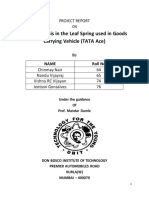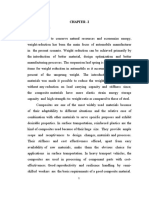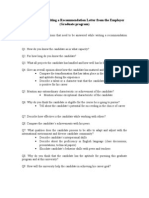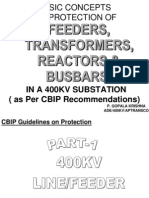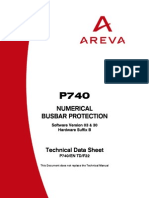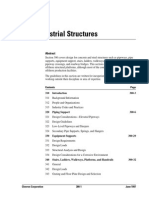A Comparative Study of Standard and Casted Eye Design of A Mono Leaf Spring
A Comparative Study of Standard and Casted Eye Design of A Mono Leaf Spring
Uploaded by
amitdhamijaCopyright:
Available Formats
A Comparative Study of Standard and Casted Eye Design of A Mono Leaf Spring
A Comparative Study of Standard and Casted Eye Design of A Mono Leaf Spring
Uploaded by
amitdhamijaOriginal Title
Copyright
Available Formats
Share this document
Did you find this document useful?
Is this content inappropriate?
Copyright:
Available Formats
A Comparative Study of Standard and Casted Eye Design of A Mono Leaf Spring
A Comparative Study of Standard and Casted Eye Design of A Mono Leaf Spring
Uploaded by
amitdhamijaCopyright:
Available Formats
A COMPARATIVE STUDY OF STANDARD AND CASTED EYE DESIGN OF A MONO LEAF SPRING
Vinkel Arora1 Krishan Kumar2 Gian Bhushan3 and M.L Aggarwal4
2
Assistant Professor, Mechanical Department, ITM University, Sector-23A, Gurgaon, HR, India Assistant Professor, Mechanical Department, YMCA University of Science & Technology, Faridabad, HR, India 3 Associate Professor, Mechanical Department, National Institute of Technology, Kurukshetra, HR, India 4 Professor, Mechanical Department, YMCA University of Science & Technology, Faridabad, HR, India E-Mail: er.krishanverma@yahoo.com
vinkelarora@gmail.com
ABSTRACT
This paper is focused on determination of better eye end design of mono leaf spring used in light motor vehicle. The procedure of this work is to carry out computer aided design and analysis of a mono leaf spring with actual design consideration and loading conditions. This conventional 65Si7 spring steel leaf spring model with standard eye end and casted eye end are considered. The CAD model of the leaf springs is prepared in CATIA and analyzed using ANSYS. The standard eye and casted eye leaf springs are subjected to similar loading conditions. The CAE analysis of the leaf spring is performed for various parameters like deflection, von-mises stress, normal stress etc. The main objective of this work is to determine the better eye end design and reduce the time and cost related to actual experimental testing by providing a CAE solution. Key words: CAE, Leaf Spring, 65Si7 spring steel. 1 INTRODUCTION
In this work single leaf spring is modeled using dedicated modeling software CATIA and considering various eye design the stresses induced in the leaf spring are computed. As eye end plays a vital role during application of leaf spring like, eyes have the critical areas where the most stresses induced in a leaf spring. Thus by changing the design of eye, stresses can be reduced11. For this purpose two different types of eye design for leaf spring analysis were considered. These two eye design are; 1. Standard eye & 2. Casted eye.
Figure 1: Standard Eye
Figure 2: Casted Eye
The above figures shows different types of the eye-end joint as summarized by Shokrieh and Rezaei figure 1 shows 1 the standard eye which is used in leaf spring. In joint type (figure 2) the eye end and spring are manufactured simultaneously from the same material. There is no stress concentration in this type. Reinforcement of composites at the junction of the eye and spring is necessary to avoid the delamination of unidirectional fibers 10. This joint configuration has the disadvantages of high cost and manufacturing complexity. Mouleeswaran describes static and fatigue analysis of steel leaf springs and composite multi leaf spring made up of glass fibre reinforced polymer using life data analysis. The dimensions of existing conventional steel leaf springs of a light commercial vehicle are taken and are verified by design calculations. Static analysis of 2-D model of conventional leaf spring is also performed using ANSYS 7.1 and compared with experimental results2. Hawang W Fatigue of Composites Fatigue Modulus
Concept and Life Prediction Journal of Composite Materials3. H. A. Al-Qureshi has described a single leaf, variable thickness spring of glassfiber reinforced plastic (GFRP) with similar mechanical and geometrical properties to the multileaf steel spring, was designed, fabricated and tested4. J.J.Fuentes in this work, the origin of premature failure analysis procedures, including examining the leaf spring history, visual inspection of fractured specimens, characterization of various properties and simulation tests on real components, were used5. Rajendran I, S. Vijayarangan A formulation and solution technique using genetic algorithms (GA) for design optimization of composite leaf springs is presented here6. Gulur Siddaramanna explain the automobile industry has shown increased interest in the replacement of steel spring with fiberglass composite leaf spring due to high strength to weight ratio. Leaf springs industries working with 65Si7 spring steel are using a very low factor of safety for weight reduction 7. To achieve this, experimental testing is done to predict the spring rate, bending stress and deflection. Aggarwal M.L evaluated the axial fatigue strength of EN45A spring steel specimen experimentally as a function of shot peening in the conditions used for full-scale leaf springs testing in industries. S/N curves of the specimens are correlated with leaf springs curve in vehicles8. M. M. Patunkar proposed computer based modeling and analysis of leaf spring 9. Peiyong Qin worked on abacus for the design and analysis of leaf spring12 .The process is time consuming and costly. In this work, a CAE system predicts various variables in complex assemblies of leaf springs and the results are compared for standard & casted eye design.
2 MATERIAL & DESIGN PARAMETERS
The basic requirements of leaf springs steel is that the selected grade of steel must have sufficient harden ability for the size involved to ensure a full martenstic structure throughout the entire leaf section. In general terms higher alloy content is mandatory to ensure adequate harden ability when the thick leaf sections are used. The material used is 65Si7. The chemical composition of the material is shown below in table 1.
Table 1: Chemical composition of 65Si7 GRADE C% Si% Mn % P% S%
65Si7
0.61
0.79
0.014
0.035
0.024
The design parameters are shown below in table 2.
Table 2: Design parameters Parameter Material selected- steel Youngs Modulus, E HRC Poissons Ratio Tensile strength Ultimate Tensile strength Yield Leaf span Spring stiffness Density Value 65Si7 2.1x105 N/mm2 38 0.266 1272 MPa 1158 MPa 1450mm 220 N/mm 0.00000785 Kg/mm3
3 MODELING AND ANALYSIS
The 2D drawing of leaf springs is shown in the Figure 3 below.
Figure 3: Drawing of leaf spring 3.1 CAD Modeling
CAD modeling of any project is one of the most time consuming process. One cannot shoot directly from the form sketches to finite element model. CAD modeling is the base of any project. The finite element software will consider shapes, whatever is made in CAD model. Although most of the CAD modeling software have capabilities of analysis to some extent and most of finite element software have capabilities of generating a CAD model directly for the purpose of analysis, but their off domain capabilities are not sufficient for large and complicated models which include many typical shapes of the product. The CAD models of the eye design were prepared in CATIA and the analysis and comparison of results are performed using Ansys. The CAD model of the standard eye and casted eye are shown in the Figure 4 below.
Figure 4: Standard eye design
Figure 5: Casted eye design 3.2 Analysis Using ANSYS
The CAD model of leaf springs is now imported into Ansys-11 as shown in figures below. All the boundary conditions and material properties are specified as per the standards used in the practical application. The material used for the leaf spring for analysis is structural steel, which has approximately similar isotropic behavior and properties as compared to 65Si7 spring steel leaf springs.
Figure 6: Standard eye in ANSYS
The procedure for performing analysis in ANSYS involves:
Figure 7: Casted eye in ANSYS
3.2.1 Specifying Joints
A joint is an idealized kinematics linkage that controls the relative movement between two bodies. Joint types are characterized by their rotational and translational degrees of freedom as being fixed or free. In this assembly two revolute joints are used between eye and pin. The joint rotation is 18 corresponding to no load camber angle of 162.
Figure 8: Revolute joint between eye and pin 3.2.2 Meshing
Meshing is the process in which your geometry is spatially discretized into elements and nodes. This mesh along with material properties is used to mathematically represent the stiffness and mass distribution of your structure. The default element size is determined based on a number of factors including the overall model size, the proximity of other topologies, body curvature, and the complexity of the feature. If necessary, the fineness of the mesh is adjusted up to four times (eight times for an assembly) to achieve a successful mesh. In this assembly SOLID92 mesh element is used for the results.
Figure 9: Meshed model of standard eye leaf 3.2.3 Setting Analysis Environment
Figure 10: Meshed model of casted eye leaf
A static structural analysis determines the displacements, stresses, strains, and forces in structures or components caused by loads that do not induce significant inertia and damping effects. Steady loading and response conditions are assumed; that is, the loads and the structure's response are assumed to vary slowly with respect to time. Static structure analysis takes into consideration some parameters, like material properties, loading conditions, support conditions, joints and contacts which are to be specified as the input to the pre processing of the analysis.
3.2.4 Setting Boundary Conditions
The boundary conditions are applied by taking into consideration the experimental loading conditions. The static loading condition of single leaf spring involves the fixation of one of the revolute joint and applying displacement
support at the other end of leaf springs. Loading conditions involves applying a load at the centre of the main leaf. As per specifications the springs is drawn at flat condition, therefore the load is applied in downward direction to achieve initial no load condition. As no load assembly camber is 162.
Figure 11: Static loading condition
Figure 12: Boundary condition in ANSYS 4. SOLUTIONS 4.1 Results for standard eye
Figure 13: Total deformation
Figure 14: Normal stress
Figure 15: Von Mises stress 4.2 Results for casted eye
Figure 16: Factor of safety
Figure 17: Total deformation
Figure 18: Normal stress
Figure 19: Von Mises stress
Figure 20: Factor of safety
5 RESULTS AND DISCUSSIONS Table3: Result Comparison Parameter Load Deflection Von Mises Stress Normal Stress Factor of Safety Standard Eye 50 N 109.62 mm 773.34 MPa 654.12 MPa Max-15 Min-0.381 Casted Eye 50 N 115.61 mm 750.08 MPa 783.51 MPa Max-15 Min-0.331 Variation Nil 5.4% 3.0% 19.08% Nil 13.1%
a. From the above table it has been observed that for same static load, when the standard eye is replaced with casted eye, equivalent stress reduction of 2.9% and increase in deflection of 5.44% is achieved. b. From the above table it is observed that the minimum value of factor of safety is reduced by 13.1% for casted eye. c. It is also observed that there is increase in Normal stress by 19.08% in the case of casted eye.
CONCLUSION
This work involves design and analysis of single leaf spring under static loading conditions. The 3D model is prepared in CATIA and then CAE analysis is performed using ANSYS-11. From the results obtained from ANSYS, discussions have been made and it will be concluded that: When same load is applied to standard and casted leaf spring equivalent stress reduction of 2.9% and increase in deflection of 5.44% is achieved. As maximum stress induced is below the yield stress therefore it is concluded that casted eye is also safe under given loading conditions. At the same time bending stress for same load is increased by 19.08 % in case of casted eye analysis as compared with standard eye. This may be observed because the actual material is 65Si7 but for CAE analysis structural steel is used. As the minimum factor of safety is reduced by 13.1% in case of casted eye it is concluded that the area of minimum factor of safety will fail earlier in case of casted eye. Hence casted eye is not recommended. It is concluded that CAE tools provides a cost effective and less time consuming solution in comparison with the experimental testing but the results may vary in the specified range.
1.
2.
3. 4.
REFERENCES
1. Shokrieh M M, Rezaei D. Analysis and Optimisation of composite leaf spring, Composite Structures; Elsevier publication 60, 2003, pp.317-325. 2. Mouleeswaran Senthil kumar, Sabapathy Vijayarangan,Analytical and experimental studies on fatigue life prediction of steel and composite multi-leaf spring for light passenger vehicles using life data analysis Materials Science, vol. 13, no. 2, 2007, pp. 141-146. 3. Hawang, W, Han, K.S, Fatigue of Composites Fatigue Modulus Concept and Life Prediction Journal of Composite Materials, vol. 20, 1986, pp.154165. 4. H. A. Al-Qureshi, Automobile leaf springs from composite materials, Journal of Material Processing Technology, vol.118, 2001, pp.58-61. 5. J.J.Fuentes, H.J.Agulilar, J.A.Rodriguez, E.J. Herrera, Premature fracture in automobile leaf springs, Engineering Failure Analysis, vol.16, 2008, pp.648-655. 6. I. Rajendran, S. Vijayarangan,Design and Analysis of a Composite Leaf Spring Journal of Institute of Engineers India ,vol. 82, 2002, pp.180 187.
7. Gulur Siddaramanna Shiva shanker, Sambagam Vijayaragan,Mono Composite Leaf spring for light weight vehicle Design, end Joint analysis and testing , Materials Science, vol. 12, no. 3 , 2006, pp. 220-225. 8. Aggarwal M.L; V.P;Khan, Aggarwal R.A, A stress approach model for predicting fatigue life of shot peened EN45A spring steel, International Journal of Fatigue, Elsevier publication, vol. 28, 2006, pp.1845-1853. 9. M. M. Patunkar, D. R. Dolas, Modelling and Analysis of composite leaf spring under the static load condition by using FEA ,International Journal of Mechanical & Industrial Engineering, vol. 1,issue 1,2011, pp.1-4. 10. Supavut Chantranuwathana, Kadekheaw Panichanun, Preedanood, Prempreeda Pimply Wichien prakarn, Parig Kruo-ongarjnukool, Experimental verification of leaf spring model by using a leaf spring test rig at 23rd conference of Mechanical Engineering Network of Thailand, 2009, pp. 123-131. 11. R.M. Mayer ,J.P. Hou; J.Y. Cherruault, I. Nairne, G. Jeronimidis, Evolution of the eye-end design of a composite leaf spring for heavy axle loads Composite Structures, Elsevier publication, 2007, pp.351-358. 12. Peiyong Qin, Glenn Dentel, and Mikhail Mesh, Multi-Leaf Spring and Hotchkiss Suspension, ABAQUS Users Conference, 2002.
You might also like
- Reinforced Concrete Structures R. Park T.paulayDocument783 pagesReinforced Concrete Structures R. Park T.paulayMamet Edvant90% (10)
- Development of A CAE Method To Predict The Fatigue Life of Aluminium Panels Joined by Self Piercing RivetsDocument7 pagesDevelopment of A CAE Method To Predict The Fatigue Life of Aluminium Panels Joined by Self Piercing RivetsAltairEnlightenNo ratings yet
- Leaf Spring AnalysisDocument8 pagesLeaf Spring AnalysisDaniel AlvaradoNo ratings yet
- A Comparative Study of CAE and Experimental Results of Leaf Springs in Automotive VehiclesDocument12 pagesA Comparative Study of CAE and Experimental Results of Leaf Springs in Automotive Vehiclesnadeem ahmadNo ratings yet
- Ijest11 03 09 010Document12 pagesIjest11 03 09 010kamiseller24No ratings yet
- Review On Design and Analysis of Two Wheeler Connecting RodDocument5 pagesReview On Design and Analysis of Two Wheeler Connecting RodVIVEK UPADHYAYNo ratings yet
- Design and Analysis of Composite Leaf SpringDocument8 pagesDesign and Analysis of Composite Leaf Springcheran reddyNo ratings yet
- 10isca RJRS 2012 042Document5 pages10isca RJRS 2012 042Surya KiranNo ratings yet
- Design and Assessment of Multi Leaf Spring: Ashish V. Amrute, Edward Nikhil Karlus, R.K.RathoreDocument10 pagesDesign and Assessment of Multi Leaf Spring: Ashish V. Amrute, Edward Nikhil Karlus, R.K.RathoreVenkatesh NanneboinaNo ratings yet
- ManuscriptDocument9 pagesManuscriptMou BenNo ratings yet
- Leaf Spring Literature Survey 2Document3 pagesLeaf Spring Literature Survey 2mustafaNo ratings yet
- Design Optimization and Analysis of A Parabolic Leaf SpringDocument7 pagesDesign Optimization and Analysis of A Parabolic Leaf Spring'İlker BaharNo ratings yet
- Design and Fabrication of Fatigue Test Rig For Composite Leaf SpringDocument12 pagesDesign and Fabrication of Fatigue Test Rig For Composite Leaf SpringIJRASETPublicationsNo ratings yet
- Design & Analysis of Mono Composite Leaf Spring: Volume 2 Issue2 PP 103-107 May 2013Document5 pagesDesign & Analysis of Mono Composite Leaf Spring: Volume 2 Issue2 PP 103-107 May 2013Rajesh Kumar PNo ratings yet
- Design Analysis and Experimental ValidatDocument7 pagesDesign Analysis and Experimental Validatnavneet.dypcetNo ratings yet
- Composite Leaf Spring 1 PDFDocument4 pagesComposite Leaf Spring 1 PDFVijay AnandNo ratings yet
- Matecconf Eureca2020 03001Document13 pagesMatecconf Eureca2020 03001Putra JokoNo ratings yet
- Design and Analysis of A Leaf Spring For Automobile Suspension System: A ReviewDocument5 pagesDesign and Analysis of A Leaf Spring For Automobile Suspension System: A ReviewvenugopalmangaNo ratings yet
- Modeling & FEA of Universal Coupling of An Automobile TruckDocument12 pagesModeling & FEA of Universal Coupling of An Automobile TruckIJIRSTNo ratings yet
- 5.eng Design and Analysis of Helical Springs in Two Wheeler Suspension SystemDocument14 pages5.eng Design and Analysis of Helical Springs in Two Wheeler Suspension SystemImpact JournalsNo ratings yet
- Design and Analysis of Wishbone For Double Wishbone Suspension SystemDocument4 pagesDesign and Analysis of Wishbone For Double Wishbone Suspension SystemCoversTamil.MNo ratings yet
- Research Article Computer Aided Fea Comparison of Mono Steel and Mono GRP Leaf SpringDocument4 pagesResearch Article Computer Aided Fea Comparison of Mono Steel and Mono GRP Leaf SpringVivek FegadeNo ratings yet
- Irjet V6i5216Document5 pagesIrjet V6i5216Harish KumarNo ratings yet
- Analysis of Residual Stresses in A Butt Weld Using Ansys Software (Models and Analysis Is Require)Document5 pagesAnalysis of Residual Stresses in A Butt Weld Using Ansys Software (Models and Analysis Is Require)Vanitha AmalakantiNo ratings yet
- Design & Analysis of Mono Composite Leaf SpringDocument5 pagesDesign & Analysis of Mono Composite Leaf Springijsret100% (1)
- Design For Fatigue and Simulation of Glass Fibre Epoxy Composite Automobile Leaf SpringDocument22 pagesDesign For Fatigue and Simulation of Glass Fibre Epoxy Composite Automobile Leaf SpringjonNo ratings yet
- Optimal Strength Design of Composite Bicycle WheelsDocument6 pagesOptimal Strength Design of Composite Bicycle WheelsLợi Lê ĐìnhNo ratings yet
- Analysis of Fly WheelDocument5 pagesAnalysis of Fly Wheelfsilassie8012No ratings yet
- Irjet V8i7547Document10 pagesIrjet V8i7547Harish KumarNo ratings yet
- Design and Static Analysis of Leaf SpringDocument10 pagesDesign and Static Analysis of Leaf SpringSahad MkNo ratings yet
- Design and Analysis of Steel Leaf Spring and Composite Leaf Spring Using Finite Element Method ApproachDocument10 pagesDesign and Analysis of Steel Leaf Spring and Composite Leaf Spring Using Finite Element Method ApproachIJRASETPublicationsNo ratings yet
- Connecting Rod Research PaperDocument5 pagesConnecting Rod Research PaperVIVEK UPADHYAYNo ratings yet
- Cae Analysis For Fatigue Failure For Coiled Spring Life Enhancement in Press Machine Stamping Operation Address For CorrespondenceDocument3 pagesCae Analysis For Fatigue Failure For Coiled Spring Life Enhancement in Press Machine Stamping Operation Address For CorrespondenceBoby SaputraNo ratings yet
- Comparative Analysis of Two Proposed Models of ConDocument5 pagesComparative Analysis of Two Proposed Models of ConThái PhươngNo ratings yet
- Analysis of Knuckle JointDocument12 pagesAnalysis of Knuckle JointSUNIL AHERNo ratings yet
- Stress Analysis of Leaf Spring Suspension System WDocument16 pagesStress Analysis of Leaf Spring Suspension System WEngineers rockNo ratings yet
- OptimizationDocument8 pagesOptimizationThaiHuynhNgocNo ratings yet
- Design and Analysis of Flywheel For Different Geometries and MaterialsDocument6 pagesDesign and Analysis of Flywheel For Different Geometries and Materialsjaison jacobNo ratings yet
- Al7075 AnsysDocument7 pagesAl7075 AnsysBlack MNo ratings yet
- FEA Course Project ReportDocument13 pagesFEA Course Project ReportA48Rayan PereiraNo ratings yet
- Ydgb 2 U 1586735204Document15 pagesYdgb 2 U 1586735204sun rise1No ratings yet
- Springback Behavior of AA6082T6 Tubes in Three-Point Bending OperationDocument7 pagesSpringback Behavior of AA6082T6 Tubes in Three-Point Bending OperationYasser BouktirNo ratings yet
- Optimization of Car Rim Using OptiStructDocument6 pagesOptimization of Car Rim Using OptiStructsujaydsouza1987No ratings yet
- Design and Analysis of A Rocker ArmDocument5 pagesDesign and Analysis of A Rocker ArmInternational Journal of computational Engineering research (IJCER)No ratings yet
- 2 67 1599883408 1170ijmperdjun20201170Document12 pages2 67 1599883408 1170ijmperdjun20201170Hamza RehmanNo ratings yet
- Design and Analysis of The Transmission System in Geared Turbofan EngineDocument8 pagesDesign and Analysis of The Transmission System in Geared Turbofan EnginesarvNo ratings yet
- Finite Element Analysis of Connecting Rod For Two Wheeler and Optimization of Suitable Material Under Static Load ConditionDocument7 pagesFinite Element Analysis of Connecting Rod For Two Wheeler and Optimization of Suitable Material Under Static Load ConditionAnonymous CUPykm6DZNo ratings yet
- Machine Element2 Project 222Document3 pagesMachine Element2 Project 222Gebeyaw DemekeNo ratings yet
- Dynamic Analysis of Leaf SpringDocument9 pagesDynamic Analysis of Leaf SpringTHEBESTNo ratings yet
- Main ProjectDocument67 pagesMain ProjectMagesh OfficialNo ratings yet
- Performance Analysis of Two Mono Leaf Spring Used For Maruti 800 VehicleDocument3 pagesPerformance Analysis of Two Mono Leaf Spring Used For Maruti 800 VehicleVinoth KumarNo ratings yet
- Structural and Material Analysis of An Automobile Wheel Rim Using AnsysDocument6 pagesStructural and Material Analysis of An Automobile Wheel Rim Using Ansysnadimduet1No ratings yet
- Design and Analysis of Composite Built Leaf Spring Systems For Heavy and Light VehicleDocument5 pagesDesign and Analysis of Composite Built Leaf Spring Systems For Heavy and Light VehicleInternational Journal of Technology and Emerging Sciences (IJTES)No ratings yet
- Modelling and Analysis of Reinforced Concrete Beam Under Flexure Using AnsysDocument9 pagesModelling and Analysis of Reinforced Concrete Beam Under Flexure Using AnsysjayanthNo ratings yet
- International Journal of Engineering Research and Development (IJERD)Document7 pagesInternational Journal of Engineering Research and Development (IJERD)IJERDNo ratings yet
- Design and Structural Analysis of Spur Gear Using Various MaterialsDocument15 pagesDesign and Structural Analysis of Spur Gear Using Various MaterialsprajeeshNo ratings yet
- Article 35Document7 pagesArticle 35rwnkq4xnckNo ratings yet
- Design and Analysis of A Suspension Coil Spring PDFDocument7 pagesDesign and Analysis of A Suspension Coil Spring PDFCiobanu MihaiNo ratings yet
- Analysis of Coil Spring Used in Shock Absorber Using CAEDocument4 pagesAnalysis of Coil Spring Used in Shock Absorber Using CAEInnovative Research PublicationsNo ratings yet
- Design and Analysis of Composite Structures for Automotive Applications: Chassis and DrivetrainFrom EverandDesign and Analysis of Composite Structures for Automotive Applications: Chassis and DrivetrainNo ratings yet
- Change Management Process: Office of State FinanceDocument23 pagesChange Management Process: Office of State Financejust_checkingNo ratings yet
- NCMM-Part 1Document20 pagesNCMM-Part 1amitdhamijaNo ratings yet
- Guidelines For Writing A Recommendation Letter From The Employer (Graduate Program)Document1 pageGuidelines For Writing A Recommendation Letter From The Employer (Graduate Program)amitdhamijaNo ratings yet
- Sample LORDocument1 pageSample LORamitdhamija0% (1)
- ALL AMF Panel DrawingsRev B05082008Document15 pagesALL AMF Panel DrawingsRev B05082008amitdhamija100% (3)
- Transformer FAQsDocument1 pageTransformer FAQsamitdhamija100% (1)
- CG LUCY ETC Medium Voltage Switchgear ProductsDocument32 pagesCG LUCY ETC Medium Voltage Switchgear Productsbinesh_shahenggco100% (3)
- Ansi C57.92 TrafoDocument28 pagesAnsi C57.92 Trafoliheber100% (2)
- CBIP RecommondationsDocument89 pagesCBIP Recommondationsgkpalepu100% (19)
- Ansi C37.32-1996Document42 pagesAnsi C37.32-1996amitdhamijaNo ratings yet
- Numerical Busbar Protection: Technical Data SheetDocument24 pagesNumerical Busbar Protection: Technical Data SheetamitdhamijaNo ratings yet
- HintsDocument3 pagesHintsamitdhamijaNo ratings yet
- Ic EngineDocument41 pagesIc Engineamitdhamija100% (7)
- 1814 3) Design Criteria For Steel Structural WorksDocument18 pages1814 3) Design Criteria For Steel Structural WorksPrasadarao TalluriNo ratings yet
- Surrey ENGM030 Unit 1 PresentationDocument44 pagesSurrey ENGM030 Unit 1 PresentationPhilip YapNo ratings yet
- Lindner KatalogDocument64 pagesLindner KatalogAnonymous hISvHbfiB1No ratings yet
- Civ 300Document70 pagesCiv 300liamo8888No ratings yet
- Project Report - Praveen KumarDocument78 pagesProject Report - Praveen KumarPraveen Kumar DusiNo ratings yet
- Impact LoadingDocument6 pagesImpact LoadingCharles OndiekiNo ratings yet
- Pitch Roof Specs PDFDocument24 pagesPitch Roof Specs PDFyanickdouce1206100% (1)
- 200-Foot Simple Span Bridge Girder Design Using NU2000 V1Document50 pages200-Foot Simple Span Bridge Girder Design Using NU2000 V1Anthony GravagneNo ratings yet
- Chapter 2 Design PrinciplesDocument30 pagesChapter 2 Design PrinciplesamanyaNo ratings yet
- Aircraft DesignDocument22 pagesAircraft DesignShivam100% (1)
- Visio-VME-00114H-06 - R00 - Mall of Egypt-HVAC Water Distribution Pumps - VSD PDFDocument43 pagesVisio-VME-00114H-06 - R00 - Mall of Egypt-HVAC Water Distribution Pumps - VSD PDFahmedsamir88No ratings yet
- Behaviour of R.C.C. Tall Buildings Having Different Shapes Subjected To Wind LoadDocument5 pagesBehaviour of R.C.C. Tall Buildings Having Different Shapes Subjected To Wind LoadRiyaz SiddiqueNo ratings yet
- Construction Loading: Bcsi Cfsbcsi Bcsi CfsbcsiDocument3 pagesConstruction Loading: Bcsi Cfsbcsi Bcsi CfsbcsiFederico.IoriNo ratings yet
- Irjet V5i6276 PDFDocument5 pagesIrjet V5i6276 PDFAkula VeerrajuNo ratings yet
- StAad ModelingDocument18 pagesStAad ModelingVineet Verma0% (1)
- CMAA Most Asked Action AlertsDocument27 pagesCMAA Most Asked Action Alertstggjr100% (1)
- Assignment 1 327 18 Theory of StructuresDocument11 pagesAssignment 1 327 18 Theory of StructuresDonna MoralesNo ratings yet
- Influence of LinesDocument15 pagesInfluence of LinesAyoola OluwadotunNo ratings yet
- Concrete and FireDocument16 pagesConcrete and FirejasimabdNo ratings yet
- Ufc 3 301 01 2013Document168 pagesUfc 3 301 01 2013praveen0907No ratings yet
- 2-Dead, Live, Carne, and Snow Loads SteelDocument69 pages2-Dead, Live, Carne, and Snow Loads SteelNazar ShafiqNo ratings yet
- AISI LRFD Method For Cold-Formed Steel Structural MembersDocument31 pagesAISI LRFD Method For Cold-Formed Steel Structural MembersHernan Ramiro Suyo LarutaNo ratings yet
- Fixed Vs PinnedDocument2 pagesFixed Vs Pinnedgopi_ggg20016099No ratings yet
- A New Fatigue Crack Growth Rate Testing Method: KnowledgeDocument15 pagesA New Fatigue Crack Growth Rate Testing Method: KnowledgeManoj ManoharanNo ratings yet
- Shear ConnectorsDocument11 pagesShear ConnectorssubathraponniNo ratings yet
- Bial T-2 Forecourt DBRDocument18 pagesBial T-2 Forecourt DBRShaileshRastogiNo ratings yet
- Strength of Seat Belt Anchor AnalysisDocument6 pagesStrength of Seat Belt Anchor Analysissaketh ReddyNo ratings yet
- IEEE 691 2001 pt1Document40 pagesIEEE 691 2001 pt1Seref DoverNo ratings yet
- D2F F14Document20 pagesD2F F14Emy JacobNo ratings yet







































